How to do an oil and filter change on the Yamaha R3 / MT-03
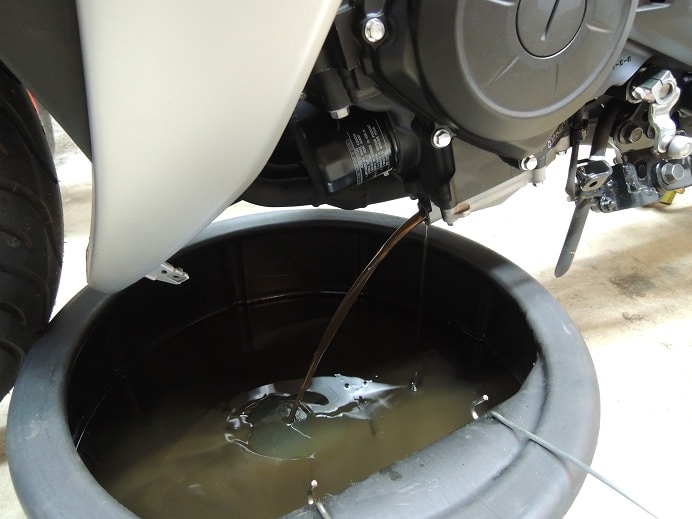
This is another great writeup by my friend mfgchapin over at R3-Forums.com. Thanks!
There’s a lot of debate on how to break in a bike, what brand oil to use, what weight, mineral, semi-synthetic or full synthetic, but the one thing that’s not debatable is changing your oil and filter often will guarantee a happier and longer-lived engine. It’s easy and relatively cheap, so read on.
Tools & Supplies Required:
Gloves (seriously, these are necessary, cancer sucks)
12 mm socket
17 mm socket (if using a K&N filter)
4 mm Allen wrench
Oil filter wrench or Phillips screwdriver to hammer into the side of the filter
Oil catch pan
Replacement drain plug crush washer
2.5 quarts of oil new oil
Funnel
Replacement Oil filter
Torque wrench
First off, I like to do all my work on a rear stand. It’s not totally necessary, but it’s more stable and I prefer the bike to be upright. It’s especially nice for this job since the oil drains easier.
You can actually do this without taking off any fairings, but I find the work area a little cramped. Taking off the left fairing only adds about 10 minutes to the job and gives you a lot more room to work with.
Step 1: Start with the trim piece under the seat. The 2 bolts come out with a 4mm Allen, then it pulls out of the rubber grommets.
Step 2: Move on to the lower fairing, where 3 bolts come out with a 4mm Allen. The Japanese love to fit fairings together with hooks and tabs, so be careful not to break them when you’re pulling off the lower. Start with the upper portion of the fairing by pulling down and away out of the hook.
This hook goes into the slot on the lower fairing.
Move to the front, lower portion of the fairing and there are tabs held in slots. You need to pull the fairing down into the wider portion of the slots, then the whole thing can slide back and out.
This is what you’re left with.
Step 3: You always want to run an engine to warm it up before doing an oil change. This warms up the oil so it flows out better, and it circulates it to pick up as much debris in the oil that has settled to the bottom and flow the debris out with the old oil. If the engine is cold, run it until it’s at 3 bars on the dash temperature display. Put the catch pan under the bike and loosen the drain bolt with your 12 mm socket. This is probably where you’ll want to put gloves on since nobody likes getting burned by hot oil and/or skin cancer. Motor oil is bad for you, try not to get it on your skin.
Step 4: Remove the oil filter. You can use an oil filter wrench to loosen the filter, but they tend to round off on me and this filter was especially tight from the factory, so I hammered a Phillips screwdriver through the side of the oil filter and used it like a wrench to loosen the filter. As long as you only stab the end of the filter away from the bike as seen in the photo, you’ll only puncture the filter and nothing vital on the bike. Obviously, be careful if you choose this method, and try not to knock the bike over. When you remove the old filter, be sure you remove the old gasket and don’t leave it stuck to the bike. Installing a new filter with an old gasket still stuck on the bike is a common way to get a bad oil leak.
Let everything drain for a few minutes, gently rock the bike back and forth a little, and let it drain a bit more.
Step 5: Remove the old washer from the drain plug and put a new one on. Thread it back into the bike and torque it to 20 Nm (14 ft lbs). That’s not very much, so it’s important you don’t over-torque and strip the threads, especially if you are using an aftermarket aluminum drain plug, they are very easy to strip.
Step 6: Open your new oil filter, I like K&N filters because they have a 17mm nut on the end that’s drilled for safety wire. I used a KN204, which is a little shorter than OEM, but a KN148 also fits, it’s just a little longer. Dip your (gloved) finger in new oil and rub some on the filter’s O-ring. Fill the new oil filter about half way with fresh oil, then thread it onto the bike. Get it as tight as you can by hand, then give it maybe 1/16 of a turn with the wrench to snug it up. It doesn’t need to be super tight, the service manual calls for 17 Nm (12 ft lbs).
Step 7: Refill the bike with fresh oil. The filler cap is on the other side of the bike. Go ahead and dump in the first quart, but watch closely as you’re pouring in the second not to over-fill, just in case all the old oil didn’t drain out. When you see oil in the window, put the filler cap back on and run the bike for a minute or two to let the oil circulate. Check it again off the stand but upright and fill as necessary. Mine took a little over 2 qts.
Fairing installation is the reverse of removal. They’re pretty flexible but be gentle with the tabs, especially as the bike gets older. The plastic gets more brittle with age. For the lower fairing, the longer bolt goes on the bottom right by the kickstand.
Reset your oil interval by going to the trip meter before the odometer. Hold reset until it blinks, let go, then hold again until it zeroes out. Job’s done!
About Norton Racing
10 Comments to “ How to do an oil and filter change on the Yamaha R3 / MT-03”
You must be logged in to post a comment.

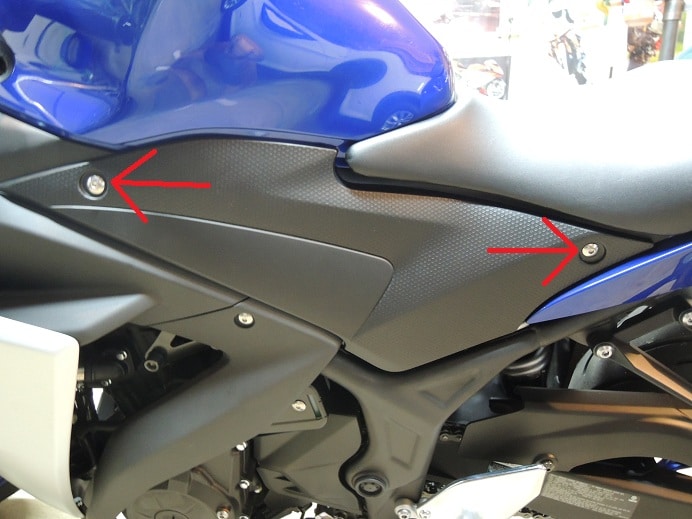
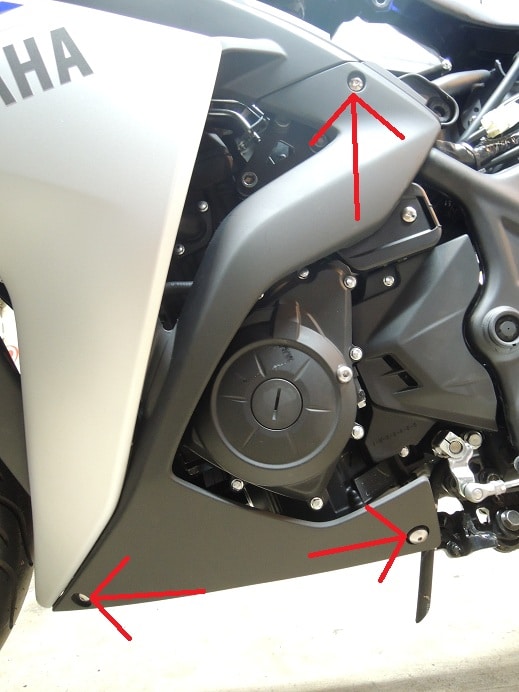
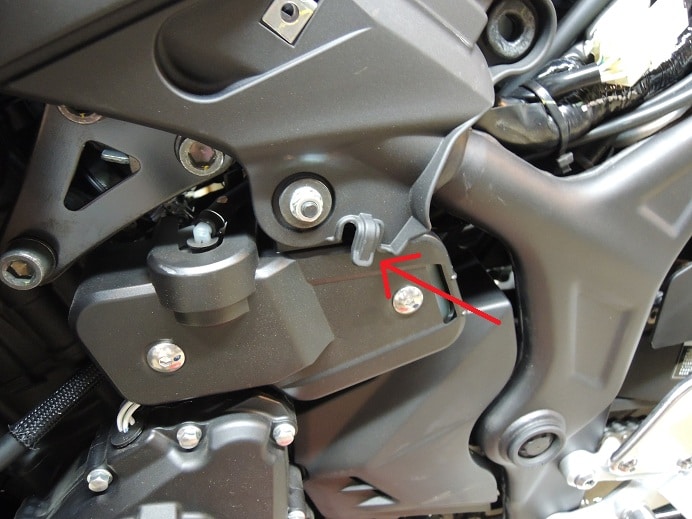
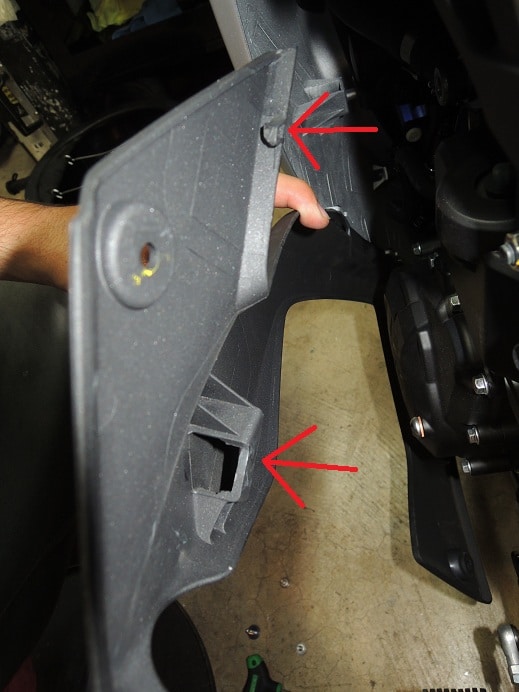
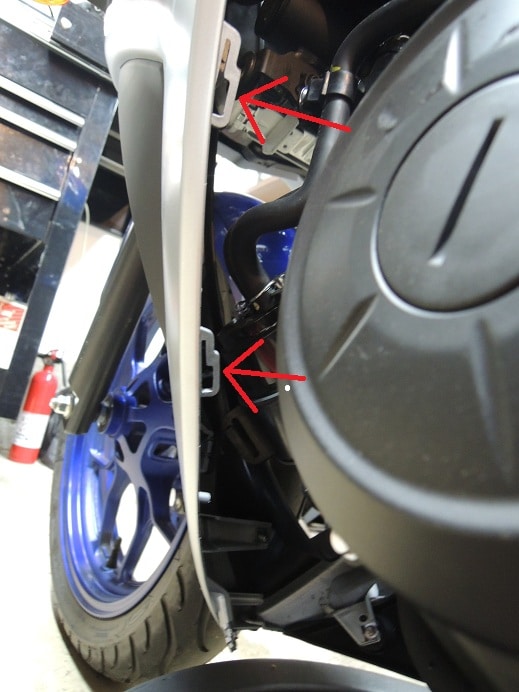
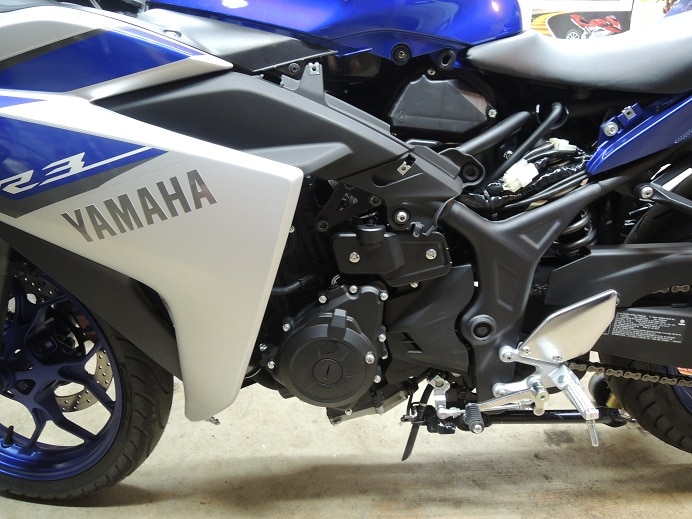
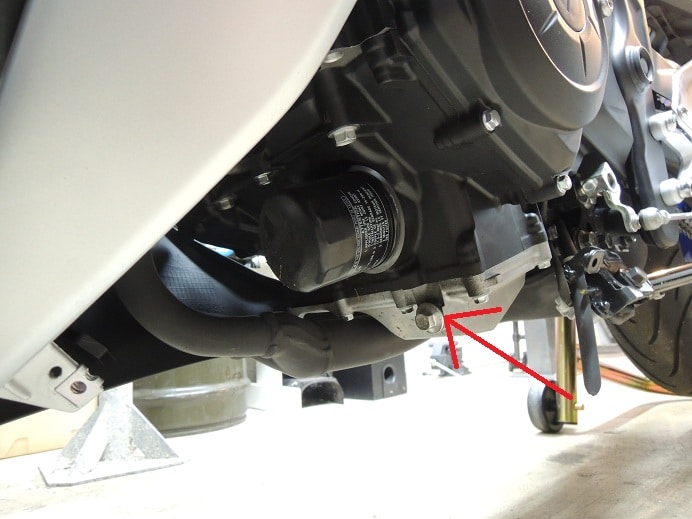
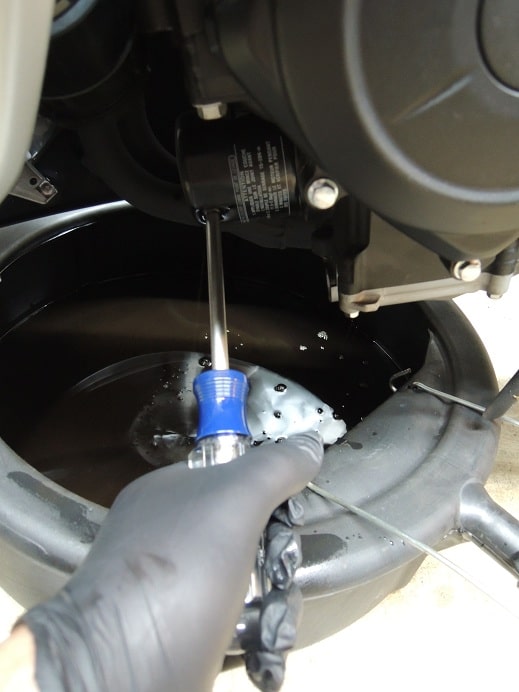
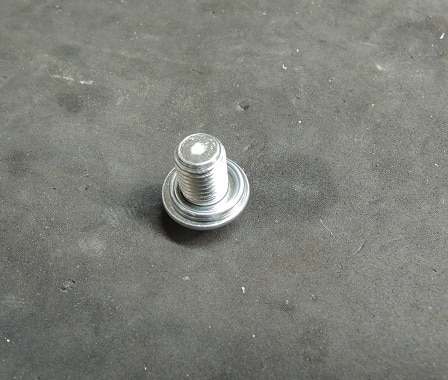
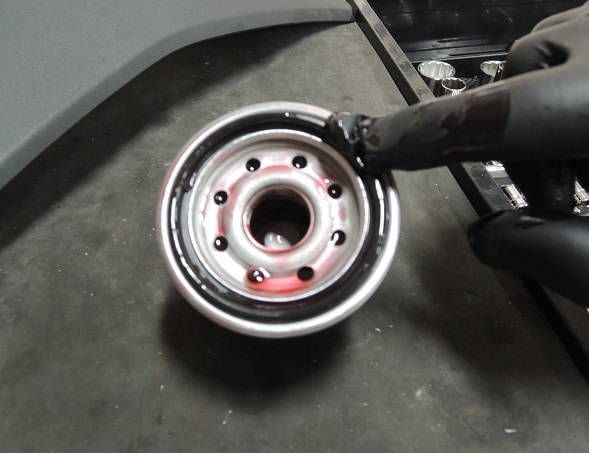
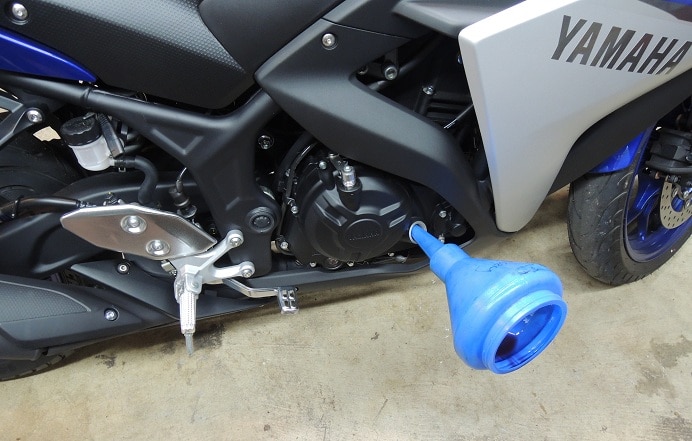
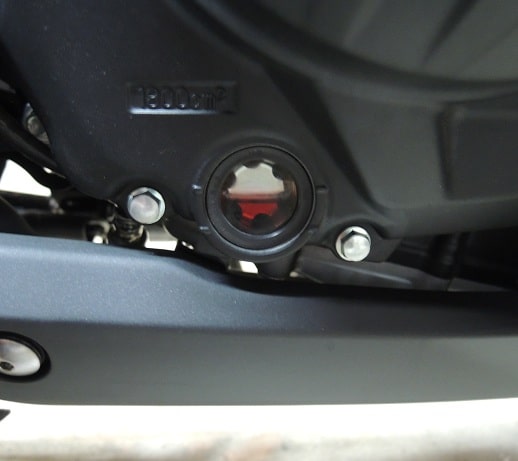
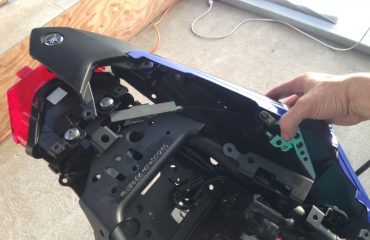
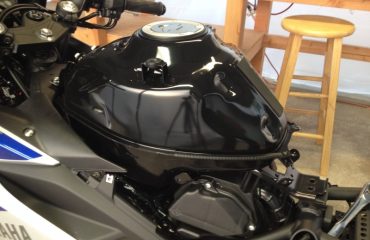
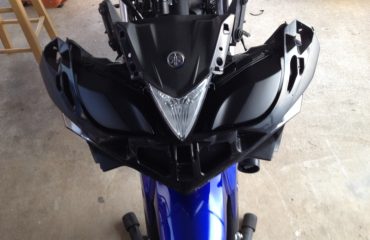
Thanks for the tips. Still wondering to get this bike for my daily commute and the tracks. My r6 abit taxing on my wallet.
Respected Sir/ Madam.
Hope you are doing well.. Itz been really a great help from by posting out so many how to`s , one can really learn from your narration with pictures.. But I need a help Can you please upload or mail me the yamalube OEM Oil filter number like 5GH-13440-20-00 or 5GH-23440-50-00 or whatever the number is.. please help me.
Thank you
I don’t know the OEM Yamaha part number but I used a K&N #204 filter.
Good morning: the oem filter replacement number for yzf-r3 is: 1WDE-41D0-V000 according the replacement parts diagram, but in the filter box there’s other number: 5GH-13440-50, and it’s yamaha/denso brand, it’s the same used for yzf-r1 and yzf-r6 model before 2007, I guess that is the reason of the obumbenumber. Hope it has been useful.
i noticed you’re not using motul. what oil did you use or what oil do you recommend?
thanks!
I run synthetic castrol Power RS Racing oil.
Hello there, in terms of procedure I messed up a little bit and got impatient for some reason. I didn’t realize that 2 L was not enough to even start filling up the “engine oil” window thing. So for some reason I resetted the “OIL” light. Now that everything is properly done, I can’t reset the oil light and that it just stays on. I was wondering if it has any affect on the bike. Its a 2017 r3. Some help will be appreciated.
When you say oil light, do you mean the word “oil” on the dash? Or the oil pressure light? If you don’t have enough oil in the bike, and the oil pressure light is on, that’s bad. If the word “oil” is on the dash, that’s just a reminder to get an oil change, there’s a procedure in the manual to reset it.
I just did the first oil change on my R3 and found the drained oil has a gasoline smell to it and looks slightly swirly. I seen on some forums that this can happen on some motorcycles? Just wanted some input. Bike doesn’t have any noticable performance issues, no CEL, no smoke, doesn’t look like the oil level changed from the dealer… I smelled my lawnmower’s oil (lol), because it’s the only other small engine I have for reference and it has the same smell… So normal maybe?
It’s hard to say without seeing it or smelling it. I can’t say I’ve really noticed this, but maybe just because it’s normal to me I don’t notice, not sure. Keep an eye on the sightglass every ride for awhile with the new oil and see what it looks like.